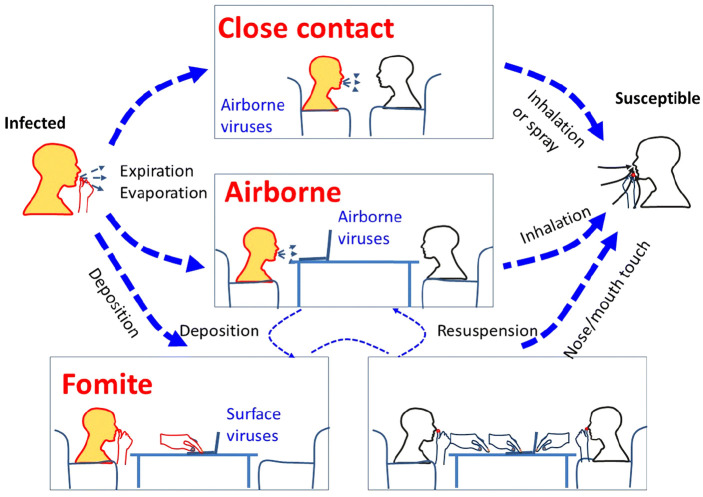Figure 1.
An illustration of various possible transmission routes of respiratory infection between an infected and a susceptible individual. Both close range (i.e., conversational) airborne transmission and longer range (over several meters) transmission routes are illustrated here. The orange head color represents a source and the white head color represents a potential recipient (with the bottom right panel indicating that both heads are potential recipients via self-inoculation from contaminated surface fomite sources). Here “Expiration” also includes normal breathing exhalation, as well as coughing and/or sneezing airflows. Airborne droplets can then settle on surfaces (fomites) from where they can be touched and carried on hands leading to further self-inoculation routes of transmission.
Reproduced from Tellier et al.18 This work is licensed under a Creative Commons Attribution 4.0 International (CC BY 4.0) License. https://creativecommons.org/licenses/by/4.0/.18

